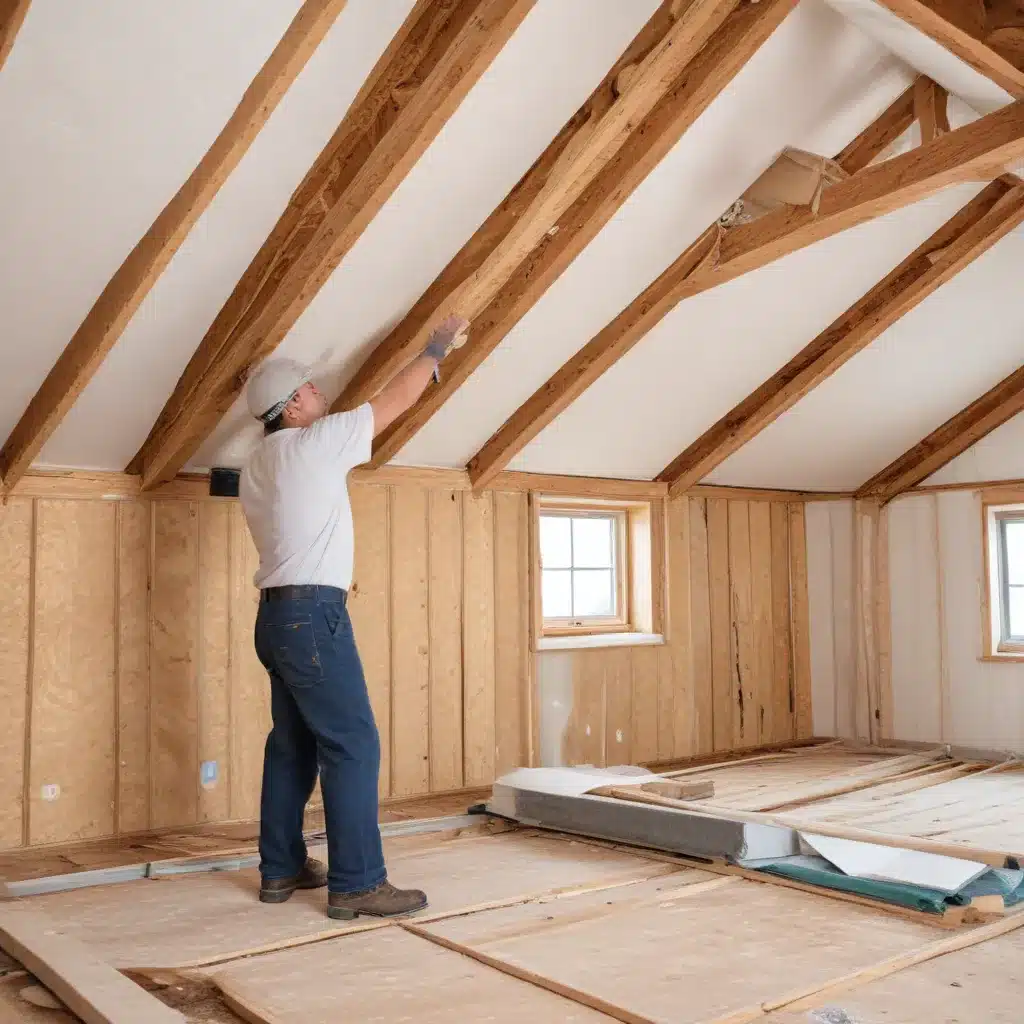
The Importance of Insulation in Energy Efficiency
Insulation plays a crucial role in maintaining a comfortable indoor environment while minimizing energy consumption. By strategically upgrading the insulation in your home, you can significantly reduce heating and cooling costs, creating a more energy-efficient and sustainable living space. Whether you’re a new homeowner or looking to retrofit an existing property, this guide will provide practical, budget-friendly insulation solutions to help you maximize your home’s energy efficiency.
Assessing Your Insulation Needs
Before diving into insulation upgrades, it’s essential to understand the current state of your home’s insulation. Conduct a thorough inspection, focusing on areas that are prone to heat loss or air leaks, such as the attic, walls, and crawl spaces. Identify any existing insulation materials, their condition, and the overall R-value (a measure of thermal resistance) to determine where improvements are needed.
Understanding R-Values
The R-value of insulation is a key factor in determining its effectiveness. Generally, higher R-values indicate better insulating properties. The recommended R-values for different areas of your home will vary based on your climate and local building codes. Consult a professional or refer to industry guidelines to determine the optimal R-values for your specific needs.
Cost-Effective Insulation Upgrades
When working with a limited budget, it’s crucial to prioritize insulation upgrades that offer the best return on investment. Here are some budget-friendly options to consider:
Attic Insulation
The attic is often a prime target for insulation improvements, as it can account for a significant amount of heat loss in a home. Blown-in cellulose or fiberglass insulation are cost-effective options that can be easily installed by DIY enthusiasts or professional contractors. These materials can provide excellent thermal performance while fitting within a tight budget.
Wall Insulation
Upgrading the insulation in your home’s walls can yield substantial energy savings. For existing homes, consider dense-packed cellulose or spray foam insulation, which can be injected into wall cavities without the need for extensive demolition. These solutions can improve the R-value of your walls while minimizing disruption to your living space.
Crawl Space and Basement Insulation
Insulating the crawl space or basement can help prevent heat loss and air infiltration. Opt for rigid foam boards or spray foam insulation to seal and insulate these often-overlooked areas, creating a more energy-efficient envelope for your home.
Maximizing Energy Efficiency with Complementary Upgrades
While insulation is a crucial component, there are other cost-effective upgrades you can implement to further enhance your home’s energy efficiency:
Air Sealing
Addressing air leaks around windows, doors, and other openings can significantly improve the overall efficiency of your home. Use caulk, weatherstripping, and professional air sealing techniques to minimize unwanted air infiltration and exfiltration.
Duct Sealing and Insulation
Ensuring your HVAC ductwork is properly sealed and insulated can prevent energy losses through the distribution system. This simple upgrade can enhance the performance of your heating and cooling equipment, leading to lower energy bills.
Programmable Thermostats
Installing a programmable thermostat allows you to automate temperature adjustments based on your daily routines, ensuring your HVAC system operates efficiently without sacrificing comfort.
Financing and Incentives for Insulation Upgrades
While the upfront cost of insulation upgrades can be a concern, there are several financing options and incentives available to help offset the expense:
Utility Rebates and Incentives
Many utility companies offer rebates or incentives for homeowners who invest in energy-efficient home improvements, including insulation upgrades. Research the programs available in your local area to take advantage of these cost-saving opportunities.
Tax Credits and Deductions
At the federal and state levels, tax credits and deductions may be available for energy-efficient home improvements. Consult with a tax professional or refer to government resources to explore the eligible upgrades and the associated tax benefits.
Selecting the Right Insulation Materials
When choosing insulation materials for your home, consider factors such as R-value, cost, ease of installation, and environmental impact. Here’s a brief comparison of some popular insulation options:
| Insulation Type | R-Value per Inch | Typical Cost per Sq. Ft. | Pros | Cons |
|---|---|---|---|---|
| Fiberglass Batt | 3.0 – 4.0 | $0.50 – $1.50 | Affordable, easy installation | Can be prone to air leaks |
| Blown-in Cellulose | 3.2 – 3.8 | $1.00 – $2.50 | Excellent air sealing, high R-value | Requires professional installation |
| Spray Foam | 5.5 – 7.0 | $1.50 – $4.00 | Exceptional air sealing, high R-value | Higher upfront cost |
| Rigid Foam Boards | 3.6 – 7.0 | $0.50 – $2.00 | Versatile, good thermal performance | Can be more difficult to install |
By understanding the unique benefits and drawbacks of each insulation type, you can make an informed decision that aligns with your budget and energy efficiency goals.
Conclusion: Embrace Budget-Friendly Insulation Upgrades
Improving your home’s insulation is a strategic and cost-effective way to enhance energy efficiency, reduce utility bills, and contribute to a more sustainable future. By prioritizing budget-friendly insulation upgrades, you can maximize your return on investment while creating a comfortable, energy-efficient living space. Remember to take advantage of available financing options and incentives to make these essential home improvements even more accessible. Start your insulation journey today and unlock the benefits of a greener, more efficient home.


